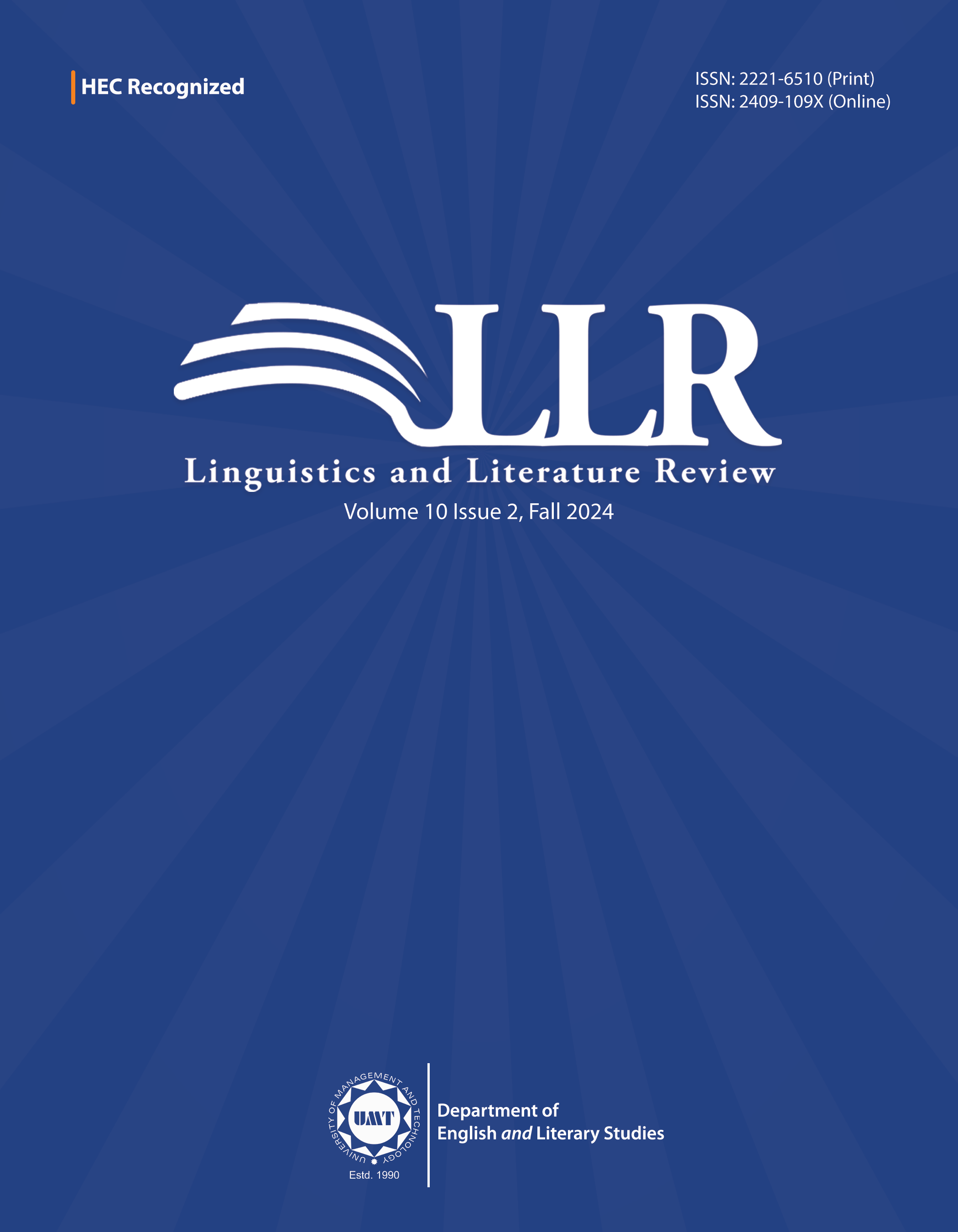Actantial Paradigm of Narrative Structures in Techno-thriller and Visionary Fiction
Abstract
 Abstract Views: 0
Abstract Views: 0
This study examines the structural patterns of two radically distinct genres, namely techno-thriller and visionary fiction, by focusing on the actantial elements of fictional works. It seeks to clarify misconceptions about traditional literary analysis by comparing the novels Rumi's Daughter by Maufroy (2004) and Deception Point by Brown (2001). The actant theory, first introduced by Greimas (1971) and later amended by Hébert (2020), is employed to analyze the roles of characters, exploring both their similarities and differences within the internal narrative structure of the selected novels. The study investigates narratives’ universal “grammar” by focusing on three pairings of binary oppositions, that is, subject/object, sender/receiver, and helper/opponent. Despite the differences in theme, culture, characters, and genre, the study shows that the characters’ narrative structure and actantial function are the same, proving Greimas’ claim that the actantial theory applies to all narratives. This study contributes to the basic understanding of the fundamental patterns that connect human narratives, despite the apparent differences between the civilizations they belong to.
Downloads
References
Adams, J. (2007). Interference patterns. Bucknell University Press.
Brown, D. (2001). Deception point. Simon & Schuster.
Cobley, P. (2016). Narrative. In P. Moy (Ed.), Oxford bibliographies in communication. Oxford University Press.
Greaney, M. (2006). Contemporary fiction and the uses of theory: The novel from structuralism to postmodernism. Palgrave Macmillian.
Greimas, A. J. (1971). Narrative grammar: Units and levels. Modern Language Notes, 86(6), 793–806. https://doi.org/10.2307/2907443
Hébert, L. & Tabler, J. (2020). An introduction to applied semiotics: Tools for text and image analysis. Routledge.
Hébert, L. (2011). Tools for text and image analysis an introduction to applied semiotics: The Actantial model. University of Quebec. https://citeseerx.ist.psu.edu/document?repid=rep1&type=pdf&doi=8efb82b11a799ff9481354036b5bab3140632213
Hernandez, G. L., Drzewiecka, J. A., & Greco, S. (2023). FortressEurope integrating through division: An actantial narrative analysis. Journal of Contemporary European Studies, 31(4), 1437–1451. https://doi.org/10.1080/14782804.2023.2171968
Maufroy, M. (2004). Rumi’s daughter. Random House.
Max, J. I. S. D., Sudirman, E. P., Rahayu, F. E. S., & Nugroho, B. A. (2023). Discourse in billboard woman of the decade award: An actantial analysis. Leksika: Jurnal Bahasa, Sastra dan Pengajarannya, 17(1), 39–55.
Oktodila, H. T., & Hapsarani, D. (2023). Actantial model as a tool in analyzing video games narrative. In S. M. G. Tambunan (Ed.), Fourth Asia-Pacific research in social sciences and humanities, arts and humanities stream (pp. 409–419). Atlantis Press.
Telli, P., & Mahdiar, M. (2015). Barthesian narrative codes as a technique for the analysis of Attar’s ‘Sheikh San’an’. Persian Literary Studies Journal, 3(4), 57–71. https://doi.org/10.22099/jps.2015.2901
Thomsen, U. (1990). A structuralist approach. Scandinavian Studies, 62(4), Article e403.
Tyson, L. (2006). Critical theory today: A user-friendly guide. Routledge.
Vilhjálmsdóttir, G., & Tulinius, T. H. (2009). Tales of two subjects: Narratives of career counseling. Journal of Vocational Behavior, 75(3), 267–274. https://doi.org/10.1016/j.jvb.2009.06.008
Wang, Y., & Roberts, C. W. (2005). Actantial analysis: Greimas's structural approach to the analysis of self-narratives. Narrative Inquiry, 15(1), 51–74. https://doi.org/10.1075/ni.15.1.04wan
Copyright (c) 2024 Ramsha Khan, Azka Khan

This work is licensed under a Creative Commons Attribution 4.0 International License.

This work is licensed under a Creative Commons Attribution 4.0 International License. Authors retain copyright and grant the journal right of first publication with the work simultaneously licensed under a Creative Commons Attribution (CC-BY) 4.0 License that allows others to share the work with an acknowledgment of the work’s authorship and initial publication in this journal.







